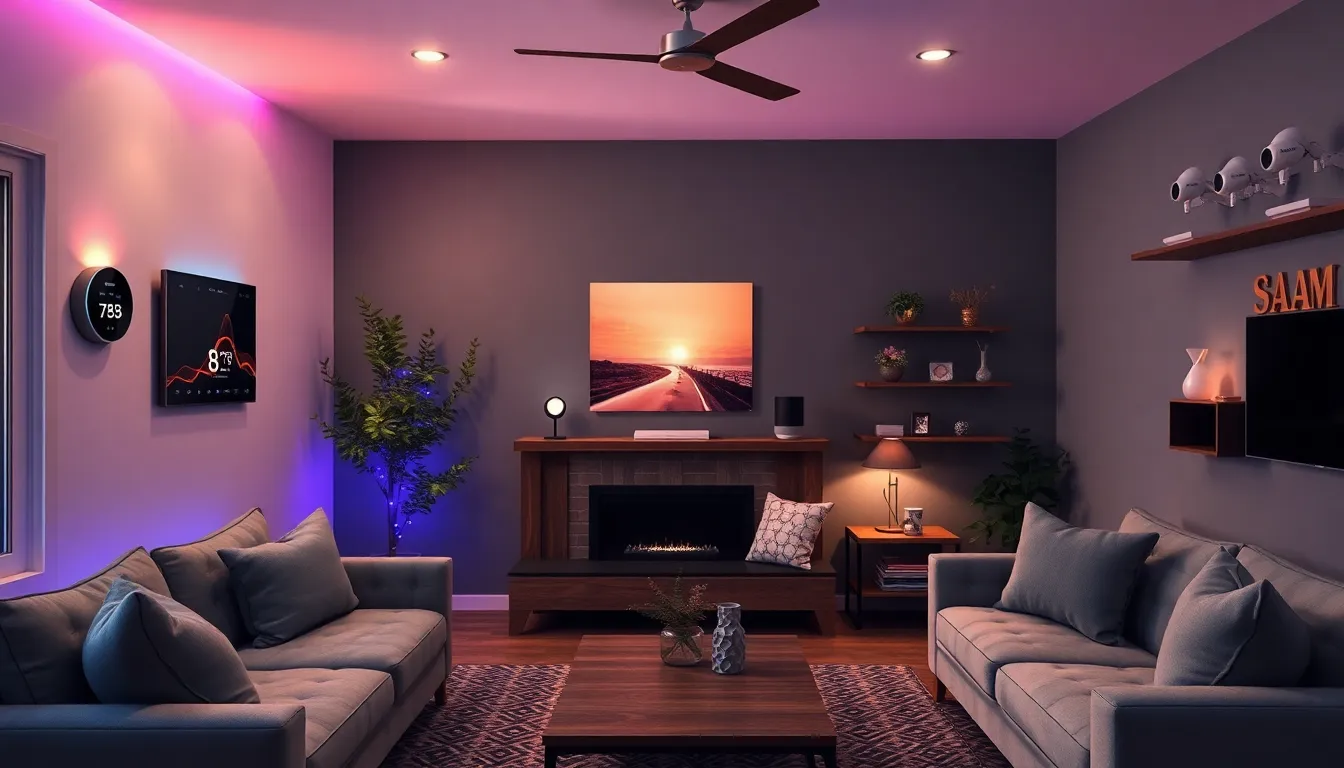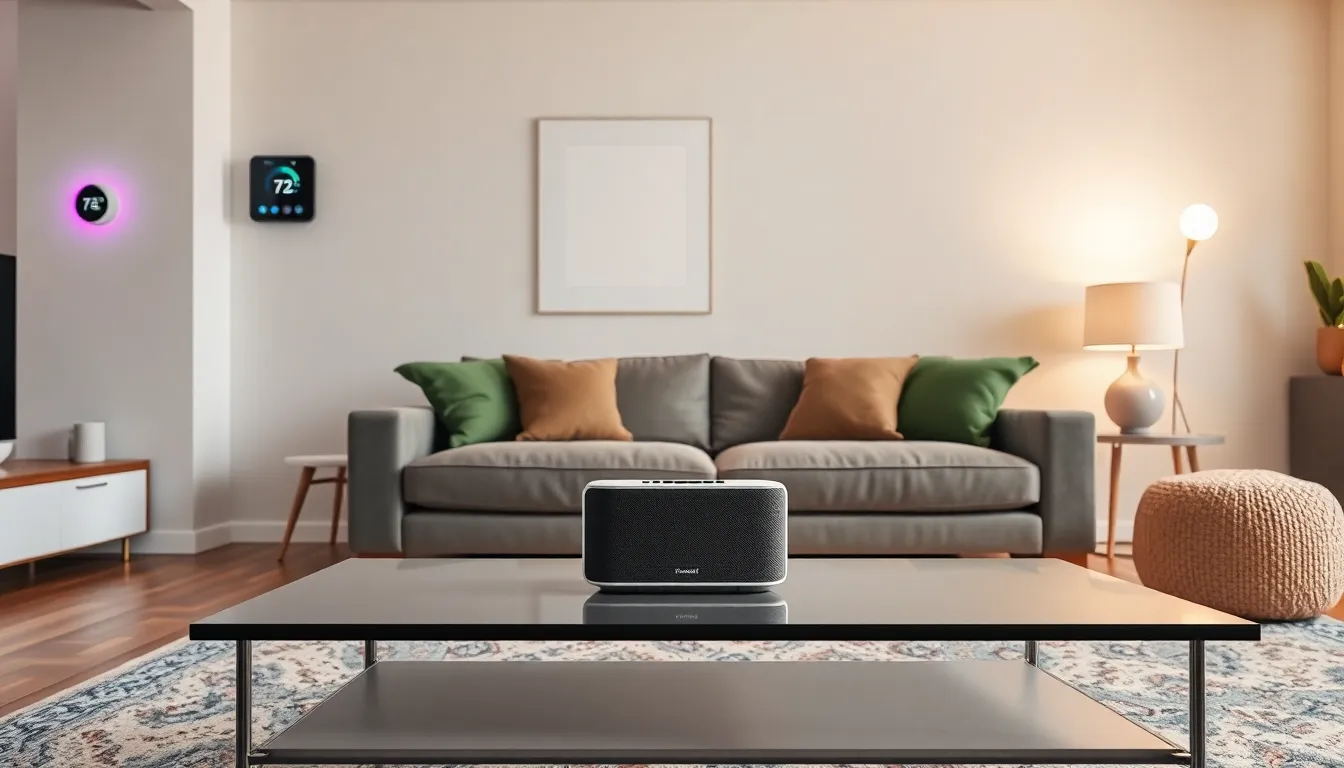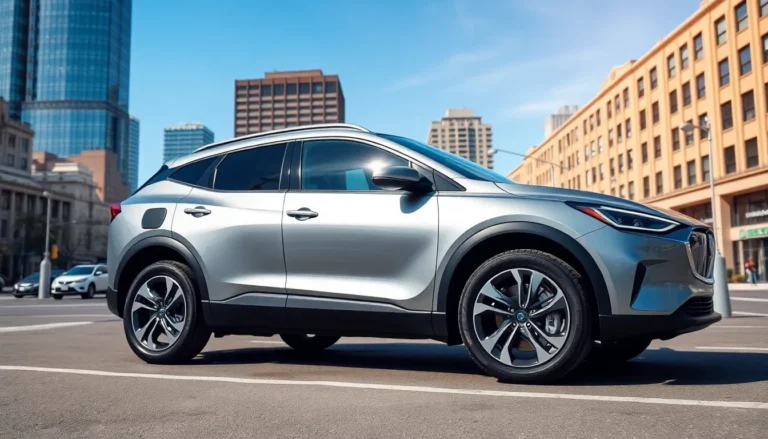In today’s fast-paced world, home automation devices are transforming how people interact with their living spaces. These innovative gadgets not only enhance convenience but also promote energy efficiency and security. Imagine controlling your lights, thermostat, and even security cameras with just a tap on your smartphone or a simple voice command.
As technology continues to evolve, homeowners are increasingly embracing smart solutions that streamline daily tasks and improve overall quality of life. From smart speakers to automated lighting systems, the possibilities are endless. This article explores the top home automation devices that can elevate any home into a smart sanctuary, making life easier and more enjoyable.
Table of Contents
ToggleOverview of Home Automation Devices
Home automation devices enhance modern living by providing seamless control over various home functions. These devices range from smart speakers and lighting systems to security cameras and thermostats. Automation often occurs through a centralized hub or smartphone applications, enabling homeowners to manage their environments with ease.
Types of Home Automation Devices
- Smart Lighting
Smart lighting systems allow users to control brightness and colors. These devices can be programmed for specific times or activated remotely. Popular brands include Philips Hue and LIFX.
- Smart Thermostats
Smart thermostats optimize heating and cooling based on user preferences and patterns. These devices learn habits and adjust accordingly, contributing to energy savings. Notable examples include the Nest Learning Thermostat and Ecobee.
- Smart Security Systems
Smart security devices provide real-time monitoring and alerts, ensuring safety. Options include smart locks, cameras, and doorbells. Leading products in this category include Ring and Arlo.
- Smart Speakers
Smart speakers function as control hubs for other devices and facilitate voice commands. They often integrate with various home automation ecosystems. Popular models include Amazon Echo and Google Nest Audio.
- Smart Appliances
Smart appliances, such as refrigerators, ovens, and washing machines, offer connectivity features that enhance usability. Brands like Samsung and LG lead in smart appliance technology.
Benefits of Home Automation Devices
- Convenience
Users can control multiple devices from a single platform, simplifying daily tasks.
- Energy Efficiency
Many devices provide energy usage insights, helping to reduce consumption and lower bills.
- Enhanced Security
Homeowners receive alerts and visuals from security devices, creating a safer environment.
- Remote Accessibility
Devices can be controlled remotely via smartphone applications, ensuring management is possible from anywhere.
As technology evolves, home automation devices continue to transform residences into more functional and efficient living spaces.
Types of Home Automation Devices

Home automation devices come in various types, each providing unique functionalities to enhance living spaces. The key categories include smart lighting systems, smart thermostats, home security systems, and smart speakers or hubs.
Smart Lighting Systems
Smart lighting systems offer control over brightness, color, and scheduling. Users can adjust lighting remotely using smartphones or voice commands. Some systems integrate motion sensors to automate lighting based on occupancy. Popular devices include Philips Hue and LIFX, which provide a range of bulb options for customized lighting experiences.
Smart Thermostats
Smart thermostats optimize a home’s heating and cooling based on real-time data and user preferences. These devices learn from user behavior, adjusting settings to maximize energy efficiency. Notable options include the Nest Learning Thermostat and Ecobee SmartThermostat, both providing remote access for enhanced home comfort.
Home Security Systems
Home security systems deliver comprehensive monitoring and alerts for enhanced safety. Devices range from smart cameras and doorbell cameras to full security systems with motion detectors and alarms. Popular choices like Ring and Arlo offer real-time notifications and video access, ensuring homeowners can monitor their properties remotely.
Smart Speakers and Hubs
Smart speakers and hubs serve as central control points for various home automation devices. These devices enable voice control and seamless integration between multiple smart gadgets. Popular options such as Amazon Echo and Google Nest Hub enhance connectivity while providing music playback and information access.
Benefits of Home Automation
Home automation devices offer numerous advantages that greatly enhance modern living. Key benefits include convenience and control, energy efficiency, and enhanced security, allowing homeowners to enjoy a smarter, more responsive home environment.
Convenience and Control
Convenience and control remain significant advantages of home automation devices. Users manage their homes remotely through smartphones or voice commands, streamlining daily tasks. Automated lighting adjusts based on occupancy, while smart thermostats create comfortable environments without manual intervention. Central control hubs integrate various devices, allowing for cohesive management of linked systems, resulting in increased ease and efficiency throughout the home.
Energy Efficiency
Energy efficiency plays a critical role in the benefits of home automation. Smart thermostats analyze user patterns, optimizing heating and cooling to reduce energy consumption. Automated lighting systems utilize occupancy sensors and timers, minimizing wasted energy. Moreover, integration with energy-efficient appliances facilitates usage monitoring and suggests adjustments that lead to cost savings on utility bills. This commitment to efficiency directly contributes to a more sustainable lifestyle.
Enhanced Security
Enhanced security serves as a compelling benefit of home automation systems. Smart security devices provide real-time monitoring of homes, with instant alerts sent to users when unusual activity occurs. Integrated cameras and motion sensors deliver peace of mind, allowing homeowners to check in remotely. Smart locks enable keyless entry and remote access, ensuring that families feel secure. This enhanced level of protection promotes a safer living environment for residents.
Potential Challenges and Considerations
Home automation devices present several challenges and considerations that consumers must evaluate. Addressing these issues helps ensure a seamless integration into daily life while maximizing benefits.
Compatibility Issues
Compatibility remains a significant concern for homeowners. Many devices operate on different protocols, such as Zigbee, Z-Wave, and Wi-Fi, leading to potential connectivity problems. New devices may lack integration with existing systems, hindering functionality. Users often face challenges when attempting to control multiple brands from a single interface. A comprehensive understanding of devices’ specifications can mitigate compatibility issues and promote smoother interactions across different platforms.
Privacy and Security Concerns
Privacy and security represent crucial factors in the adoption of home automation. Data transmitted between devices is susceptible to interception by unauthorized users. Many devices store user data, raising concerns about unauthorized access or potential breaches. Implementing robust security measures, such as strong passwords and regular software updates, can significantly reduce risks. Consumers should evaluate manufacturers’ privacy policies before purchasing, ensuring their data remains secure while enjoying the benefits of automation.
Future Trends in Home Automation
Innovations in home automation are rapidly evolving, shaping the future of smart living. These trends focus on increased connectivity, advanced AI integration, and improved user interfaces. Homeowners can expect a more cohesive ecosystem, enabling seamless interactions among devices.
Increased Interoperability
Manufacturers strive for interoperability among smart devices. Standards such as Matter, backed by major tech companies, aim to enhance compatibility. This movement allows devices from different brands to communicate easily, simplifying user experience.
Artificial Intelligence Integration
AI technologies enhance functionality in home automation devices. Voice assistants are growing smarter, understanding commands better, and predicting user needs. Improved machine learning algorithms will enable devices to adapt to individual preferences over time, providing personalized experiences.
Enhanced Security Features
With cyber threats on the rise, security remains a top priority in home automation. Advanced encryption protocols and multi-factor authentication methods will protect user data and devices. Future automation devices will include comprehensive security features to monitor vulnerabilities and alert users of potential breaches.
Smart Energy Management
Energy conservation is becoming a central focus in home automation. Smart grids will allow devices to optimize energy usage based on real-time data. Homeowners will benefit from automation solutions that minimize consumption while maximizing efficiency.
Integration with IoT
The Internet of Things (IoT) connects various devices for richer interactivity. Future home automation systems will integrate more IoT technology, enhancing functionality. Smart appliances will communicate with thermostats and security systems, streamlining household management.
Enhanced User Interfaces
User interfaces are evolving to improve usability. Voice control, augmented reality, and intuitive mobile apps will dominate future designs. These technologies will simplify device management and enhance user experience, making automation accessible to more homeowners.
Focus on Sustainability
Sustainability is becoming a crucial trend in home automation. Devices that monitor energy usage, water consumption, and air quality will facilitate eco-friendly practices. Future innovations will prioritize materials and manufacturing processes that align with sustainable living.
These trends are set to revolutionize home automation, creating smarter, more connected, and efficient living environments. As technology advances, the integration of these features will enhance convenience and elevate the user experience within homes.
Home automation devices are transforming the way people interact with their living spaces. By enhancing convenience energy efficiency and security these devices are making daily life simpler and more enjoyable. As technology continues to advance the integration of smart solutions will likely become even more seamless and intuitive.
With a focus on interoperability and user-friendly interfaces the future of home automation looks promising. Homeowners can expect smarter devices that not only streamline tasks but also contribute to sustainability efforts. Embracing these innovations will allow individuals to create a more connected and efficient home environment while enjoying peace of mind through enhanced security measures.





